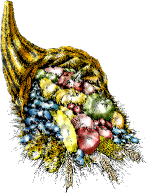Payment of medical expenses when a pedestrian is struck by a motor vehicle follows a certain order ....
In my cases involving
auto accidents, clients often ask me why their medicals are being paid under their auto insurance policy and not by the person who caused the accident. This is because Pennsylvania has a no-fault system in effect. What this means is that your medicals, and certain other benefits, are paid without regard to fault, up to the limits of the coverage available under the policy. This is the meaning of no-fault. In fact, this amount cannot be asserted against the person who caused your accident or recovered in a lawsuit against that person. This medical coverage does not only apply to you if you are an occupant of a motor vehicle involved in an accident, but also applies to pedestrians injured by a motor vehicle.
When a pedestrian is involved in an
accident involving a motor vehicle, the medical benefits payments will follow an order set forth in the Pennsylvania auto law statute, the Motor Vehicle Financial Responsibility Law (MVFRL). The coverage for medical benefits falls into the category of first party benefits or no-fault benefits. The order in which the claim is processed is contained in the statute (MVFRL)
Under the statute, 75 Pa. CS. 1713(a), any person who suffers injury arising out of the “maintenance or use” of a motor vehicle is entitled to recover first party benefits or PIP the in the following order of priority:
(1) For a named insured, the policy on which he is the named insured.
(2) For an insured, the policy covering the insured.
(3) For the occupants of an insured motor vehicle, the policy on that motor vehicle.
(4) For a person who is not the occupant of a motor vehicle, the policy on any motor vehicle involved in the accident. For the purpose of this paragraph, a parked and unoccupied motor vehicle is not a motor vehicle involved in an accident unless it was parked so as to cause unreasonable risk of injury. 75 Pa. CS. 1713(a)
So, if you own a car, you would have to first submit your medical bills to your auto carrier until your coverage is exhausted. If you do not own a car, then the order of priority set forth in the statute would apply. This could mean that you qualify for coverage if you are a resident relative, i.e., if you live with a family member who has car insurance. If not, then you would be eligible under the medical coverage of the vehicle which hit you.
You might also have to submit your medicals to your private carrier once the PIP benefits are exhausted. Private carriers can assert liens in some circumstances, which means you would have to pay back any money for medical bills you recovered from the settlement of your case. These amounts can often be negotiated with the private carrier. In the end, the person who hit you would then be responsible for any medical bills not covered by other insurance. Cases can become complicated and we are here to help you through the process.
Call me for advice at (215) 752-3732, or visit me on the web at
www.jjsassoc.net











